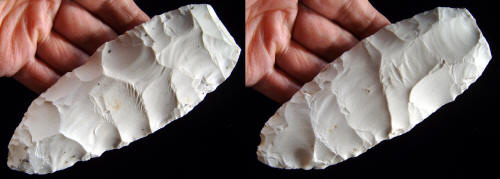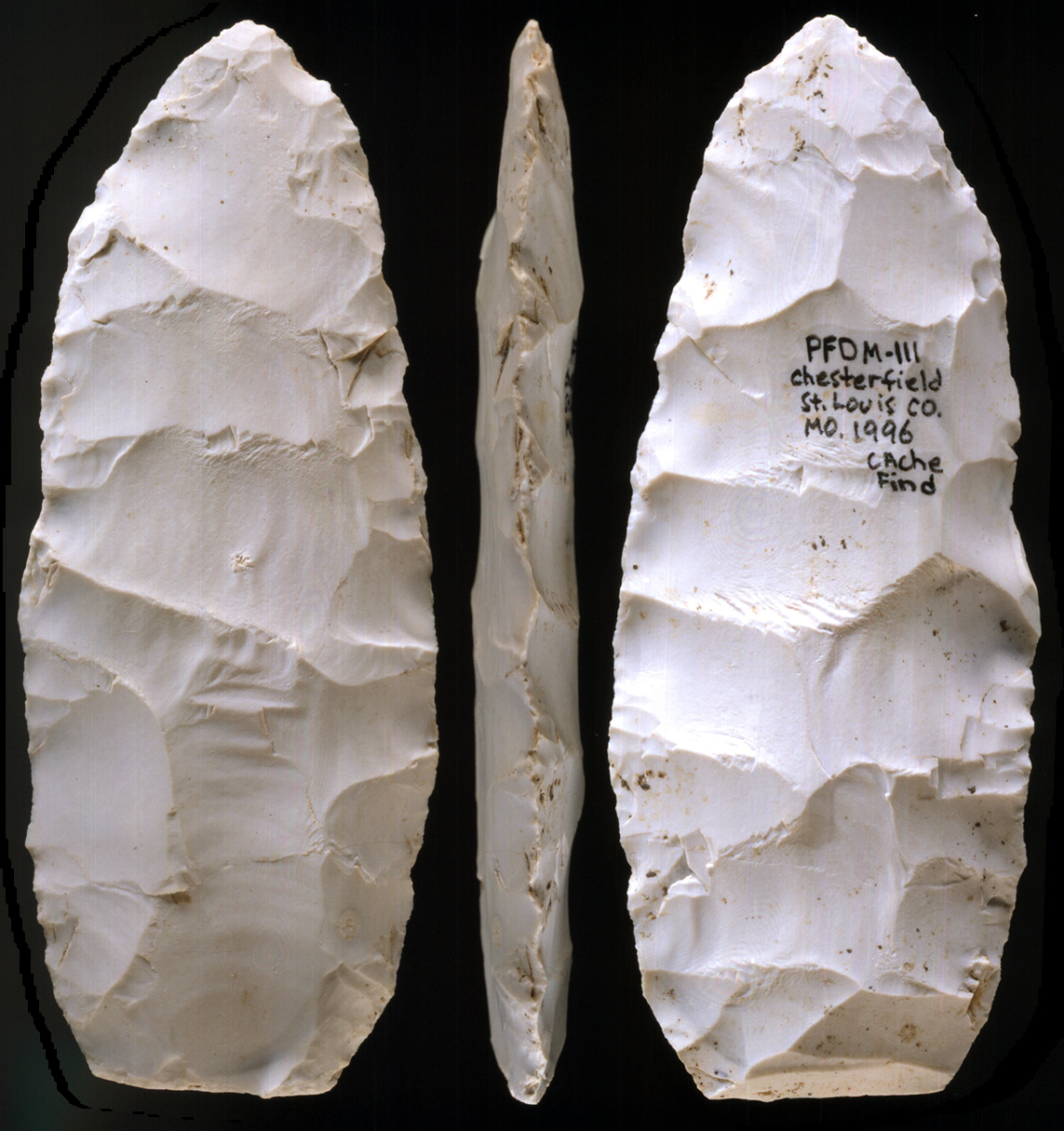|
LATE STAGE BIFACE
McKINNIS CLOVIS CACHE
ST. LOUIS COUNTY, MISSOURI
SMITHSONIAN INSTITUTION
COLLECTION
COPYRIGHT
NOVEMBER 30, 2009 PETER A. BOSTROM

CAST ILLUSTRATED
CLICK ON PICTURE FOR LARGER IMAGE
CAST #P-85
LATE STAGE BIFACE
McKINNIS CLOVIS CACHE
ST. LOUIS COUNTY, MISSOURI
This is the largest biface in the McKinnis cache and the best
representation of a recognizable Clovis shaped artifact in the
cache. The lanceolate
shape and "classic" Clovis flaking pattern suggests that this is a late stage preform
for a Clovis point. It was made with edge-to-edge percussion
flaking. Several large percussion flakes extend nearly across one edge to the opposite edge. A large thinning flake was also
struck from the base. This late stage preform was made of Burlington
chert and it measures 5 5/8 inches (14.3 cm) long, 2 1/8 inches (5.3
cm) wide and 9/16 inch (1.4 cm) thick.
It's
generally accepted that fluting is an American invention and the
technology must have developed from a pre-Clovis people who were not
fluting. One possible explanation for a paradigm shift towards a fluted
point technology might have been the incentive to use a different
flintknapping technique. This fundamental change might have developed
from a desire to utilize large high quality cherts and chalcedony that
became available in the New World for the production of very large
biface cores. If, for instance, a knapper changed his technique from
just using a billet and punch to a rocker punch technique (see
Dothager), the difference in flake removal control might begin to
produce a completely different type of projectile point. The indirect
rocker punch technique allows the knapper to remove, with less effort,
very large flakes across the face of very large bifaces and to remove
the flakes from any side, end and corner angle. This edge-to-edge style
of flaking does not appear as a tradition in post-Clovis cultures and
it's a good bet that the technique probably won't appear in a very early
pre-Clovis culture.
THE McKINNIS CACHE SITE
In 1996 a cache of 11 bifaces and 12 core blades (see
McKinnis cache) were
discovered on land that was being leveled for houses. The site is located on
a hill top and within 2 miles of the Missouri River in St. Louis County, Missouri.
This cache was made with stone tool manufacturing technology that
relates to the Clovis culture. The largest artifact in the cache is
a basally thinned late stage Clovis point preform. A base of a Clovis point was also
found near this cache.

ORIGINAL ARTIFACT ILLUSTRATED
LATE STAGE BIFACE
McKINNIS CLOVIS CACHE
ST. LOUIS COUNTY, MISSOURI
This picture shows three
views of the original McKinnis cache biface. |

